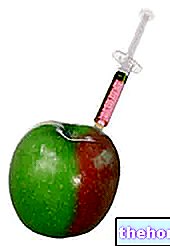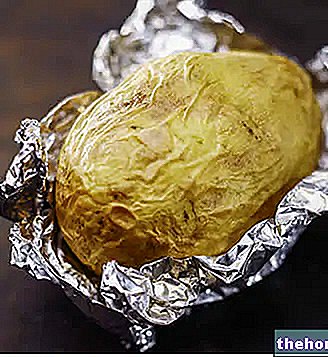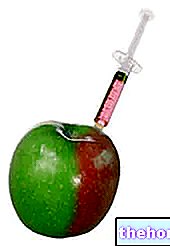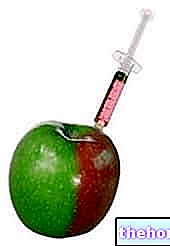Definition
The food additive, according to the Food & Nutrition Board of the United States, is defined as "any substance, or mixture of substances, other than basic foods, which is found in the food ready for consumption following the various treatments associated with the production, processing, conservation and packaging of the same ". This definition does not refer to the difference between "voluntary additive" and "involuntary additive":

At the end of the 1950s, the experts of the Des Industries Agricoles International Commission (C.I.I.A), on the occasion of the Como Symposium, have advanced a different definition of food additive: "with the name of added chemicals (substances chimiques d "addition) it is appropriate to include all the substances which are not, at the origin, a constituent part of the food, but which are added to it in order to improve its appearance, smell, taste, consistency, shelf life, or which still could enter the composition of foods as impurities deriving from the "application of the different manufacturing processes". On that "occasion the" hypothesis of a "addition to this definition was also raised:" Vitamin C, kitchen salt, vinegar, alcohol, sugar and other substances that have been considered themselves "foods" because of their nourishing or stimulating effect ".If vitamin C is excluded - the addition of which must be declared as an additive even when its vitamin activity does not come into play, but only its antioxidant or maturing activity - the resolution did not need any legal recall.
According to Italian legislation, chemical additives are considered to be those "substances without nutritional value or used for non-nutritional purposes, which are added at any stage of processing, to the mass or surface of the food, to preserve the chemical, physical or physico-chemical, to avoid "spontaneous alteration or to impart to them or favorably enhance particular characteristics of appearance, taste, smell or consistency".
In Italy, voluntary additives are governed by the Ministerial Decree of 31.3.1965 and subsequent amendments; the positive lists indicate, for each compound, the cases and doses of use allowed.
Today, even for food additives, the Italian standard is aligned with the directives of the European Economic Community (C.E.E).
Classification of food additives
Bibliography: Mariani, Testa - Food additives "09; Cerutti, Food risk -" 93
Additives can be grouped according to the main function they perform in the food in which they are contained and are classified into:
COMPOUNDS AGAINST ALTERATIONS OF MICROBIAL NATURE (ANTISEPTICS, FUNGISTATICS, ANTIFERMENTATIVES PRESERVATIVES):
- Sorbic acid and some of its salts
- Benzoic acid and some of its salts
- Some esters of p-oxybenzoic acid
- Sulfur dioxide and sulphites
- Diphenyl, o-phenylphenol, thiabendazole (for surface treatments)
- Formic acid (limited cases, in some countries)
- Formaldehyde, urotropine (limited cases)
- Nitrate and nitrite (sausages and analogues, milk for cheese in some countries)
- "Food" acids (acetic, propionic and their alkaline salts)
- Lactic acid
- Carbon dioxide
- Some antibiotics (nisin, pimaricin, for limited cases)
COMPOUNDS AGAINST THE IRRANCIDIMENTI OF FATS AND THE BROWN:
- ANTIOXIDANTS:
- L-ascorbic acid and some derivatives
- Tocopherols
- Alkyl gallates
- Lecithin (most used as an emulsifier)
- Butyloxyanisole (BHA)
- Butyloxytoluene (BHT)
- Tert-butyl-hydroquinone or TBHQ (in USA)
- SYNERGISTS (SECONDARY, SEQUESTRANT ANTIOXIDANTS):
- Lactic, citric, tartaric acid and their alkaline salts
- Phosphoric acid and its alkaline salts
- Citric ester of mono and glycerides
COMPOUNDS AGAINST ALTERATIONS OF A PHYSICAL NATURE AND / OR FOR THE CONTROL OF THE "RHEOLOGICAL" QUALITY (it is the science that studies the equilibria reached in the deformed matter due to stresses):
- THICKENERS, GELICANTS, STABILIZERS:
- Ortho-phosphates
- Alginic acid and its salts (Na-, K-, CA-, NH4-)
- Propylene glycol alginate
- Carob and guar seed flours
- Gum arabic, tragacanth, xanthan, tara
- Modified starches and starches
- Agar, carrageenan, furcellaran
- Fruit pectins as they are or modified
- Phosphates and polyphosphates
- EMULSIFIERS:
- Lecithins
- Salts of fatty acids
- Mono and glycerides of fatty acids and their esters
- Minor emulsifiers (stearoyl, lactylates, tartrate)
- Clouders (generally not allowed except in some countries)
VARIOUS ACTION ADDITIVES (as indicated by the Ministerial Decree of 14 April 1983):
- Flavor enhancers (monosodium glutamate)
- Coating agent (waxes, jellies, gums, vaseline and paraffins, coumarone-indene resins)
- Citric, tartaric, o-phosphoric, acetic, lactic acidifier
- Anti-caking agent (silica, calcium and magnesium salts)
- Leavening powder (citric acid, tartaric acid and its monopotassium salt, disodium pyrophosphate, sodium and ammonium bicarbonate, glucono-delta-lactone)
- Defoamer (dimethyl-polysiloxane only for instant drinks for vending machines)
- Melting salts (citrates and polyphates)
- Flour treatment agent (sulphites, l-ascorbic acid, cysteine)
- Various:
- Iron sulfate and gluconate
- Metatartaric acid
- Sodium and potassium carbonates and / or bicarbonates
- Calcium chloride, slaked lime and hydrated lime
- Sodium hypochlorite, sodium hydrate
- Citrates and polyphosphates
DYES
They can be divided into:
- Natural
- Synthetics
- Caramel
FLAVORING AND AROMA ENHANCERS
They can be divided into:
- Natural
- Natural-identical
- Artificial
NUTRIENTS:
- Amino acids
- Vitamins
- Mineral elements (iron, calcium, fluorine ...)
SWEETENERS OR SWEETENERS, SUGAR SUBSTITUTES:
- Sugars and similar (fructose, sorbitol ...)
- Highly nutritious sweeteners (natural, synthetic)
























-nelle-carni-di-maiale.jpg)




